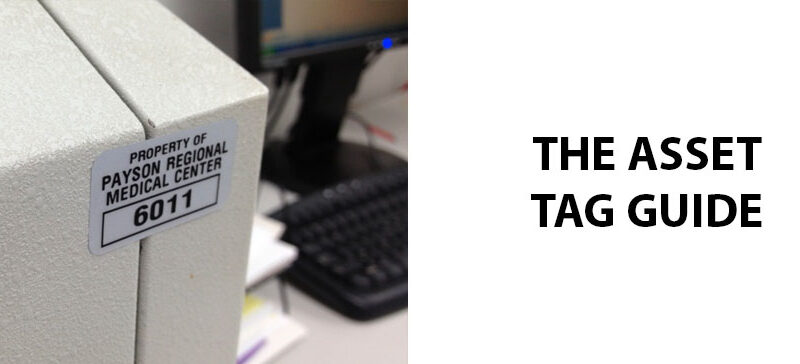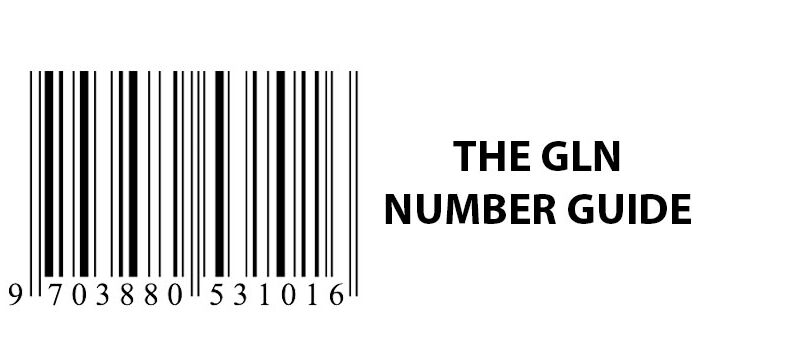Whether you’re a small business or a large enterprise, chances are you have physical assets to keep track of. Organizations around the world rely on asset tags to manage their assets. Asset tags are a simple but powerful way to monitor equipment and reduce theft. Once placed on your assets, asset labels can be scanned to locate assets or keep track of maintenance.
In this guide, we’ll explain what asset tags are and how they work. Plus, we’ll talk about different types of asset stickers and tags, the benefits of asset labels, and how best to use them.
What Is an Asset Tag?
An asset tag is a label or sticker placed on equipment, machinery, tools, electronics, and other physical assets. Asset labels usually have a barcode, QR code, or RFID tag that uniquely identifies the equipment. Asset tags can be used to record maintenance and repairs, and track location, ownership, history, and other crucial information. Asset stickers can also ensure accurate inventory counts, prevent theft, and manage asset life cycles effectively.
Different Types of Asset Tags
Just as there are many different types of assets, there are also many different types of asset tags, each designed for specific applications and environments. Here are some common types of asset labels:
- Barcode tags: Barcode tags are printed with a barcode that can be scanned. This allows you to access or record asset information.
- QR code tags: These asset stickers have a QR code or other 2D barcode. They can be scanned with a smartphone or other 2D barcode reader. These types of barcodes can encode much more information than a standard 1D barcode.
- RFID tags: RFID tags are embedded in some types of asset tags. Using radio-frequency identification, these tags enable non-contact asset tracking.
- Tamper-evident tags: These asset labels are designed to show evidence of tampering. If someone tries to remove the asset tag, the label will break apart or leave behind a pattern. This can protect assets from theft or unauthorized access.
- Heavy-duty tags: Asset tags made from materials like aluminum or high-grade plastic can withstand harsh environments. These work well for industrial or outdoor settings.
Asset Tags for Equipment
Whether you’re in construction, manufacturing, or another industry, if you rely on equipment to perform your job, you need asset tags for equipment. These tags can be designed to identify and track your equipment, helping you monitor usage and maintenance while also preventing loss.
One of the challenges of asset tags for equipment is ensuring the labels are durable enough. It’s best to choose durable materials and strong adhesives that will withstand the harsh environment of your industry. Metal, polyester, and vinyl are popular choices for their durability.
Asset tags for equipment are commonly used on:
- Heavy machinery
- Hand tools
- Production line equipment
- Medical devices
- Safety equipment
- Computers
- Servers
- Printers
- Routers and modems
- Vehicles
- And more
When placing your asset tags, it’s important to consider the location. You want to pick a spot that is visible and accessible but not subject to tons of wear and tear. This will help the label last much longer.
Asset Tracking Tags
Asset tracking tags are used to monitor the location and status of assets in real time. These labels can be integrated with asset tracking software that utilizes GPS, RFID, or Bluetooth technology to provide up-to-date information on asset movement and location. Asset tracking tags are particularly useful in large facilities, like warehouses, hospitals, and factories. Asset tracking tags can also be used to track the movement of company-owned vehicles.
Additionally, some retail stores use RFID asset tracking tags to monitor inventory. These asset tags provide a very reliable way to count inventory. RFID readers can multiple RFID tags at once, making inventory count and tracking much quicker than with an optical scanner.
Asset Management Tags
Asset management systems rely on both hardware and software to track and manage assets. Asset management tags are a fundamental component of these systems. These tags help in maintaining accurate records of assets during their lifecycle. Asset management tags use either barcodes, QR codes, or RFID chips to identify each asset. When scanned, the tags connect to the software database to provide detailed information about the asset. This can include purchase data, warranty information, maintenance history, and current status.
Using asset management tags as part of your asset management system helps streamline your operations. For example, your maintenance teams can quickly scan the tags to retrieve service history and schedule maintenance. In turn, this reduces downtime and extends the lifetime of equipment.
Fixed Asset Tags
Fixed assets are assets that remain in a single location. This can include machinery, office furniture, road signs, water systems, and more. Fixed asset tags can be used to verify assets during an audit, track depreciation, and report financial information. Some fixed asset tags can also be used to monitor the status of the asset. For example, LDAR tags are used to watch out for leaks in pipes, valves, and pumps.
Movable Asset Tags
Movable assets are assets that are frequently moved or used in multiple locations, like laptops, tools, and medical equipment. Movable asset tags are used to track the location, usage, and condition of your movable assets. This reduces the risk of loss and theft. They can be used on electronics, vehicles, tools, and other assets that change location.
Asset Tags for Computers
IT equipment is an important but expensive asset that most businesses rely on. Using asset tags for computers and other IT equipment reduces loss and theft. Tags can include barcodes, QR codes, or RFID technology. When a computer is assigned to an employee, you can keep track of who has it and where it is. Asset tags for computers can also be used to schedule and track maintenance to keep your IT assets functional for longer.
Metal Asset Tags
Metal asset tags are the most durable type of asset tags, making them perfect for harsh outdoor or industrial environments. These asset stickers are made from aluminum or stainless steel and paired with a strong adhesive. They resist chemicals, extreme temperatures, and physical wearing and tear, lasting for years. Metal asset tags are commonly used for labeling equipment and machinery used outdoors or in industrial settings.
Benefits of Asset Tags
Asset tags may be small, but they provide many benefits, including:
- Tracking: Asset tags simplify the process of locating and identifying assets. By keeping track of where your assets are, you reduce the risk of losing or misplacing them. Some asset labels even provide real-time tracking data so you always know where your assets are.
- Inventory management: Asset tags help you maintain accurate inventory records and reduce human errors associated with manual counting.
- Theft prevention: Asset tags clearly identify your assets as yours, which is a simple way to deter theft.
- Optimized maintenance: Asset tags used within an asset management system help you track asset maintenance so you know when best to schedule the next service. By keeping your assets in good shape, you can extend their lifespan.
- Cost Savings: Asset tags save you money by reducing loss and theft and optimizing asset maintenance.
Best Uses for Asset Tags
Asset tags are used in just about every industry to track physical assets. Here are some of the best uses of asset labels:
- Asset tracking
- Inventory management
- Maintenance scheduling
- Prevention of unauthorized access
- Compliance with industry regulations
- Prevention of theft and loss
Example Uses for Asset Tags
- Healthcare: The healthcare industry relies on asset tags to track usage, maintenance, and sterilization of medical equipment.
- Offices: Offices use asset labels to manage computers and other office equipment.
- Retail: Some retail stores use RFID asset tags to manage inventory and reduce theft.
- Libraries: Libraries tag books and media with asset tags to keep track of inventory and make checkout/checkin processes easier.
- Warehouses: Warehouses rely on asset tags to track pallets and shipments. This enables efficient logistics and supply chain management.
- Construction: The construction industry relies on asset stickers to monitor tools and machinery, prevent loss, and improve site management.
- Education: In the world of education, money is often tight and assets need to be managed well. Asset tags can be used to keep track of resources like laptops, computers, technology, and lab equipment.
Key Takeaways
Whatever industry you’re in, if you have physical assets, you need asset tags. These simple labels can help prevent theft, reduce loss, and track maintenance to extend the lifespan of your assets.
If you need asset tags, Coast Label is here. Whether you’re looking for heavy-duty metal tags, RFID-embedded tags, or simple asset tags, we can provide custom solutions to all your asset labeling needs.



